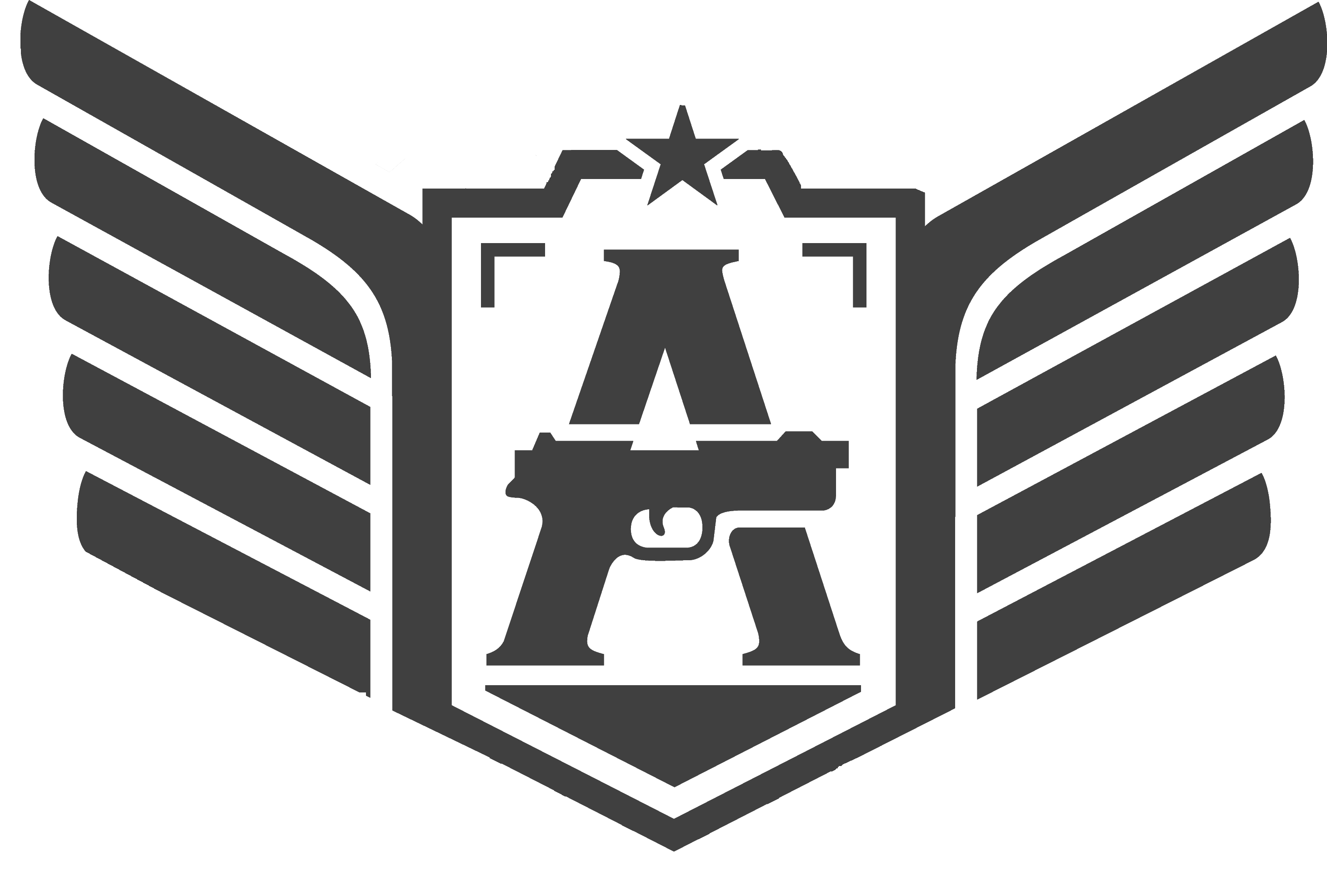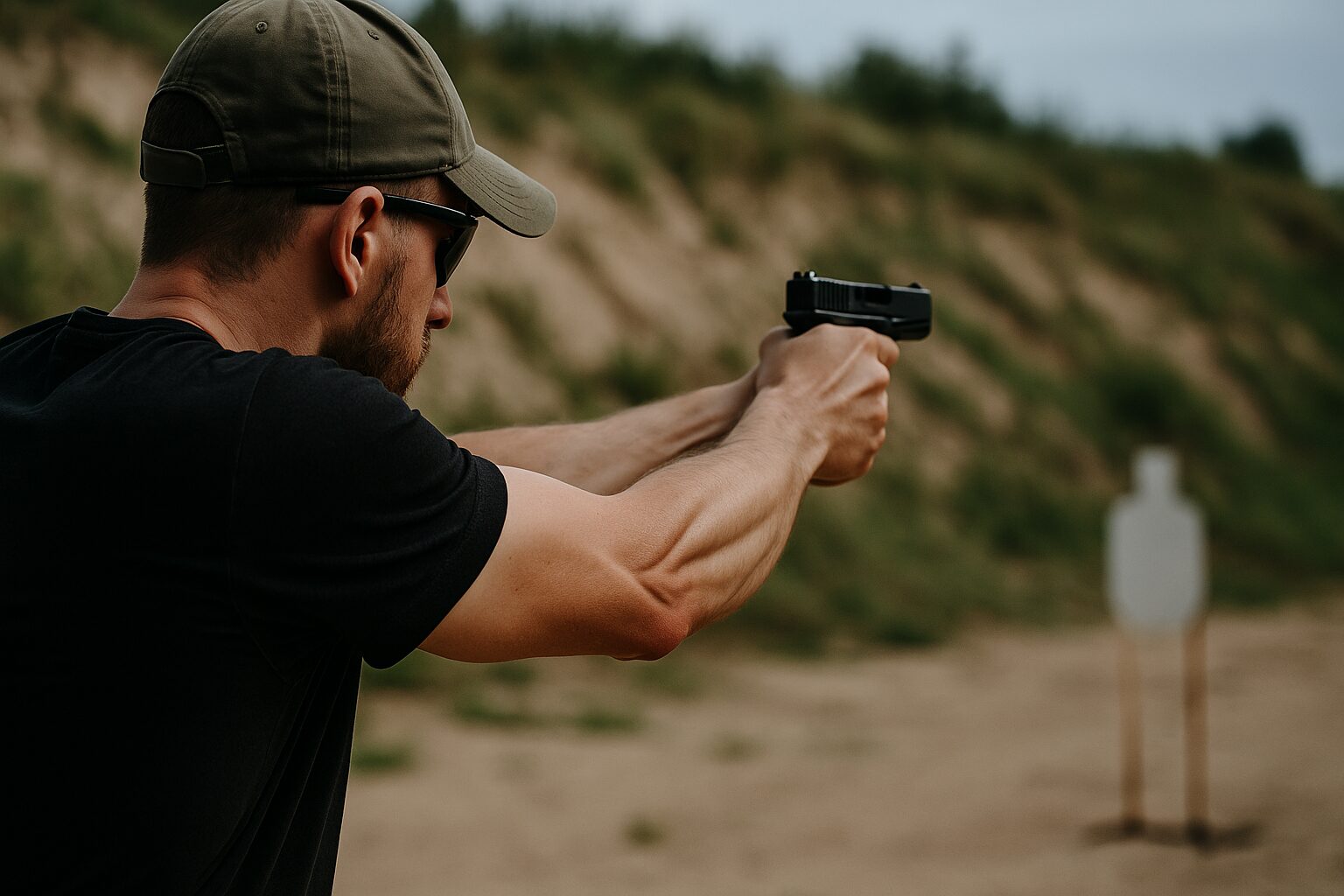When we talk about the shooting fundamentals, many shooters immediately think of front and rear sights. However, even before any attempt to align those elements, there is a fundamental principle: stance. It is not only the physical base upon which the shot will be executed; it is, in fact, the first aiming device.
The stance works as the foundation of the shot. Without a solid body platform, all other fundamentals — grip, sight picture, breathing, trigger control, and follow-through — become unstable and inconsistent. This is why effective training must always begin with the body, with the way it positions itself before the threat.
A well-constructed stance naturally directs the weapon toward the target. Instead of relying exclusively on the eye to align front sight, rear sight, and target, the entire body acts as a guide, reducing the need for corrections at the moment of the shot.
The first objective of stance is stability. To achieve it, the feet must be firmly planted on the ground, spaced about 45 to 60 centimeters apart, in a forward–rearward position. This width lowers the center of gravity, better absorbs recoil impact, and stabilizes the torso.
This stability is not only useful for the first shot but also for subsequent fire. In real combat, every enemy that needs to be neutralized must be hit repeatedly. This requires a stance that keeps the body aligned after each shot, preventing involuntary oscillations.
Recoil control is also born from stance. A poorly positioned body will need constant visual and muscular adjustments, wasting precious time. A properly aligned body, with the torso slightly leaned forward, works as a natural shock absorber, reducing recoil impact on aiming.
Another essential aspect is mobility. In combat, the shooter is not a statue. He must advance, retreat, seek cover, and adapt to uneven terrain. The correct stance should not compromise this mobility. On the contrary, it must serve as the base for fast movements, keeping the weapon efficiently pointed during transitions.
A poorly executed stance can also increase exposure to the enemy. Feet or knees projected outward at exaggerated angles can reveal the shooter’s position behind barricades or cover. A clean, disciplined stance reduces the chance of being detected.
Here we reach a crucial concept: the Natural Point of Aim (NPA). It occurs when the body, properly structured, naturally forces the weapon to align with the target. At that moment, the shot becomes more intuitive, less dependent on conscious sight alignment. The NPA is vital under extreme stress, when fine motor skills and visual acuity may be compromised.
Under lethal threat, the body reacts with adrenaline surges that reduce visual focus and impair rational decision-making. The shooter who trained his stance to naturally bring the weapon onto target is far better prepared to overcome the physiological effects of stress.
While sport shooting allows time for fine adjustments, combat shooting has different demands. It is in this scenario that stance reveals itself not just as a technique but as a philosophy of survival. It makes it possible to hit the enemy quickly, even when traditional sighting fails.
The adaptability of stance also deserves attention. Confined spaces, obstacles, the use of cover, and even climate variations require the shooter to adjust his base without losing alignment. Modern doctrines such as 360CQD or the Combat Mobility System reinforce the need to vary stances while maintaining effectiveness.
Despite possible variations, the essence remains: the body must always orient the weapon toward the threat. This coherence between body and weapon reduces response time and ensures greater efficiency in combat.

It is common to see basic errors, such as feet placed too far apart or too close together. These flaws undermine stability and compromise the shot. This is why it is essential to respect the proper spacing, always proportional to stature and terrain conditions.
Training stance means understanding that aiming is not only the task of the eyes, but an integral process that involves body, mind, and intention. The body becomes a compass: wherever the enemy is, the weapon naturally points.
With discipline and repetition, the shooter reaches a point where the weapon seems to “find the target by itself.” This naturalness is not luck, but the direct result of coherence between stability, balance, and aggressiveness.
This mastery ensures that even in low visibility or in the chaos of combat, the shots maintain a high probability of hitting. That is why stance must be regarded as the link that connects all other fundamentals.
“But Lucas, the influencer on the internet demonstrates shots with a broken stance and still hits small, distant targets.” My young Padawan, as long as the weapon is aligned with the target, you will always hit your shots — that is quite obvious.
Using the body structure to hit enemies is not conditio sine qua non, but it is a more efficient way to do so, requiring less training time, resisting better the pressures of combat risk, and multiplying positive outcomes in diverse factors.
There is always more than one way to do something, but only one of those ways is the best possible.
More than just a technical detail, stance is a philosophical tool of combat shooting: aggressive, adaptable, efficient, and natural. It is the foundation that translates intention into action and turns reaction into effectiveness.
In the end, investing in stance training is investing in survival. A shooter who masters it does not depend exclusively on front and rear sights. He turns his own body into the aiming device, making each shot a natural consequence of his discipline.




